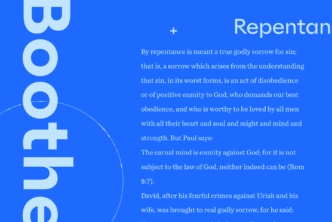***
The powers of darkness have captured the attention of millions of people, Christian or not, for millennia. If contemporary popular culture is any indication, this fascination has hardly abated. Unfortunately, a considerable amount of misunderstanding and outright misinformation has accrued to the discussion, even within the church. In my experience, much of what Christians think they know about Satan, demons, and other evil powers is guided far more by Christian tradition and hearsay than exegesis of Scripture in its own context. This is a problem of both method and translation. Most people interested in what the Bible has to say about the dark powers do not have access to the primary sources that frame the worldview of the biblical writers. English translations often obscure nuances crucial to correctly parsing what the biblical text says (and doesn’t say) about the powers of darkness.
To be fair, however, even scholars are not immune to careless statements about the powers of darkness. This is at times quite understandable if, for instance, their expertise is outside the nuts and bolts of textual analysis in ancient context. At other times, scholars uncritically accept a consensus.
Here are three common misconceptions.
This is a problem of both method and translation. Most people interested in what the Bible has to say about the dark powers do not have access to the primary sources that frame the worldview of the biblical writers. English translations often obscure nuances crucial to correctly parsing what the biblical text says (and doesn’t say) about the powers of darkness.
To be fair, however, even scholars are not immune to careless statements about the powers of darkness. This is at times quite understandable if, for instance, their expertise is outside the nuts and bolts of textual analysis in ancient context. At other times, scholars uncritically accept a consensus.
Here are three common misconceptions.
1. The devil is a Second Temple-period invention adopted by the New Testament.
Scholars commonly suggest that the figure of Satan or the devil as the archnemesis of God is foreign to the Old Testament. The reason is that (1) the Hebrew term śāṭān is not used as a proper personal name in the Old Testament, and (2) the term śāṭān is never applied to the original rebel of Eden, the serpent. These points are obvious and not in dispute in our study. However, the conclusion that the Satan figure of the Second Temple period and New Testament is incompatible with the Old Testament is too hasty and exaggerated. Our study has shown that, while the Old Testament itself does not evince the profile of the Satan figure that is prominent in these later texts, the material for that later profile can be found in the Old Testament. In other words, later writers connected data points they found in the Old Testament and applied those points to the original rebel. Surprisingly, few scholars seem to have taken this straightforward approach (i.e., that later Jewish writers used the Old Testament as the basis for the Satan figure). Rather, it is more common for them to argue that the Second Temple-period Satan figure was a contrivance that emerged after the exile as the result of the influence of Persian Zoroastrian dualism. G. J. Riley’s summary is representative:During and after the Babylonian exile, however, Israel was influenced by the cosmological dualism of Persian Zoroastrianism. This system posited two warring camps of spiritual beings headed by twin but opposing siblings, the Zoroastrian god and devil, who fought for the loyalty of humans in deadly combat. To assist in the battle the two had produced armies of lesser spirits, the angels and the demons. . . . Creation was their battlefield and the present age was the time of spiritual warfare. At the end of this age of conflict, there would be a final battle in which the devil and his hosts would be defeated and destroyed in a fiery Hell, and a new creation and new age would begin in righteousness.1 There is both truth and fallacy in such thinking. On the one hand, it would be foolish to presume that Persian Zoroastrianism contributed nothing to Second Temple Jewish thought. Our study has established that ancient writers, including biblical authors, always were part of their intellectual world. The providence of God in preparing them for the task of producing Scripture meant they were part of their world, not insulated from their own milieu.
On the other hand, it is an overstatement to presume that the core elements of the idea of Satan/the devil we see in Second Temple Judaism required Zoroastrian beliefs. . . . Rebellion in the divine council by a group of deities is far older than Zoroastrianism. The Mesopotamian apkallu story, the polemic target of the second supernatural rebellion of the Old Testament (Gen 6:1–4), predates Zoroastrianism. The notion of geographical rivalry between deities—the concept behind the Deuteronomy 32 worldview, the third divine rebellion of Scripture—is considerably older than (and not dependent upon) Persian Zoroastrianism. Zoroastrianism might have given expression to these themes, but it is not responsible for their origin. . . .2. Demons are fallen angels.
This notion is ubiquitous in popular Christian books and preaching. It is both on target and misguided. The statement fails to account for a number of items in the biblical text and the development of biblical thought about the powers of darkness. In the Old Testament, “angel” is a functional term. It is, in effect, a job description. This circumstance changes in the Second Temple period and the New Testament, where “angel” is a term used predominantly to distinguish loyal supernatural beings from evil, rebellious ones. The devil (Satan) can have “angels” on his side (Matt 25:41; Rev 12:9), which, in the totality of good versus evil, would mean that demons, part of Satan’s kingdom, can be considered fallen angels. Nevertheless, demons are consistently cast as disembodied spirits of dead Nephilim and their giant-clan descendants. Those spirits are the offspring of the angels that sinned before the flood, so the demons cannot be those fallen angels. Consequently, while a term like “fallen angels” may be used correctly in discussing demons, it is too often used simplistically and inaccurately.3. Satan rebelled before the creation of humankind and took a third of the angels with him.
This is an excellent example of how a Christian tradition can become doctrine. There isn’t a single verse in the entirety of Scripture that tells us (a) the original rebel sinned before the episode of Genesis 3, or (b) a third of the angels also fell either before humanity’s fall or at the time of that fall. There is only one passage that mentions a “third” of the angels (presumably) and Satan/the serpent in tandem: Revelation 12:1–9. . . . I say that this passage is “presumably” about one-third of God’s heavenly host being fallen because it is not clear that the “third of the stars” (Rev 12:4) swept down by the dragon (serpent/Satan) refers to the angels who already are assisting the devil. It could well be that the one-third are good angels who have been defeated by the dragon. There are good reasons to take that position—namely, that Revelation 12:4 appears to be the fulfillment of Daniel 8:10. For the purposes of this discussion, though, we will presume that this “third of the stars” refers to evil supernatural agents in league with Satan. The passage is clear that the timing of this conflict involving a third of the angels occurred in conjunction with the first coming of the MessiahAnd the dragon stood before the woman who was about to give birth, so that when she bore her child he might devour it. She gave birth to a male child, one who is to rule all the nations with a rod of iron, but her child was caught up to God and to his throne. (Rev 12:4–5)
The birth of the Messiah is clearly in view, as Revelation 12:5 points readers to the messianic theme of Psalm 2:8–9:Ask of me, and I will make the nations your heritage, and the ends of the earth your possession. You shall break them with a rod of iron and dash them in pieces like a potter’s vessel.
The reference to the child born to rule the nations as being “caught up to God and to his throne” (Rev 12:5) is an explicit reference to Jesus’ resurrection and ascension—the key events that result in the defeat of Satan and the inauguration of the kingdom of God on earth. Scores of scholars recognize this point. . . . The first advent context continues into Revelation 12:13–17. The wording of verse 17 is a clear association of the vision with the first coming of Jesus: “Then the dragon became furious with the woman and went off to make war on the rest of her offspring, on those who keep the commandments of God and hold to the testimony of Jesus” (Rev 12:17). This simply cannot be construed as describing a primeval rebellion prior to the creation of humanity in Eden. Since there is no other passage in the Bible that uses the “third” language in conjunction with a satanic conflict, the idea that Satan and one-third of the angels rebelled at that time is a traditional myth.***
Pick up Demons: What the Bible Really Says about the Powers of Darkness book or documentary today! This post is adapted from the original article, which appeared in the May/June 2020 edition of Bible Study Magazine. Scripture quotations are from the English Standard Version.
- G. J. Riley, “Devil,” in Dictionary of Deities and Demons in the Bible, ed. Karel van der Toorn, Bob Becking, and Pieter W. van der Horst, 2nd rev. ed. (Grand Rapids: Eerdmans, 1999), 245.






